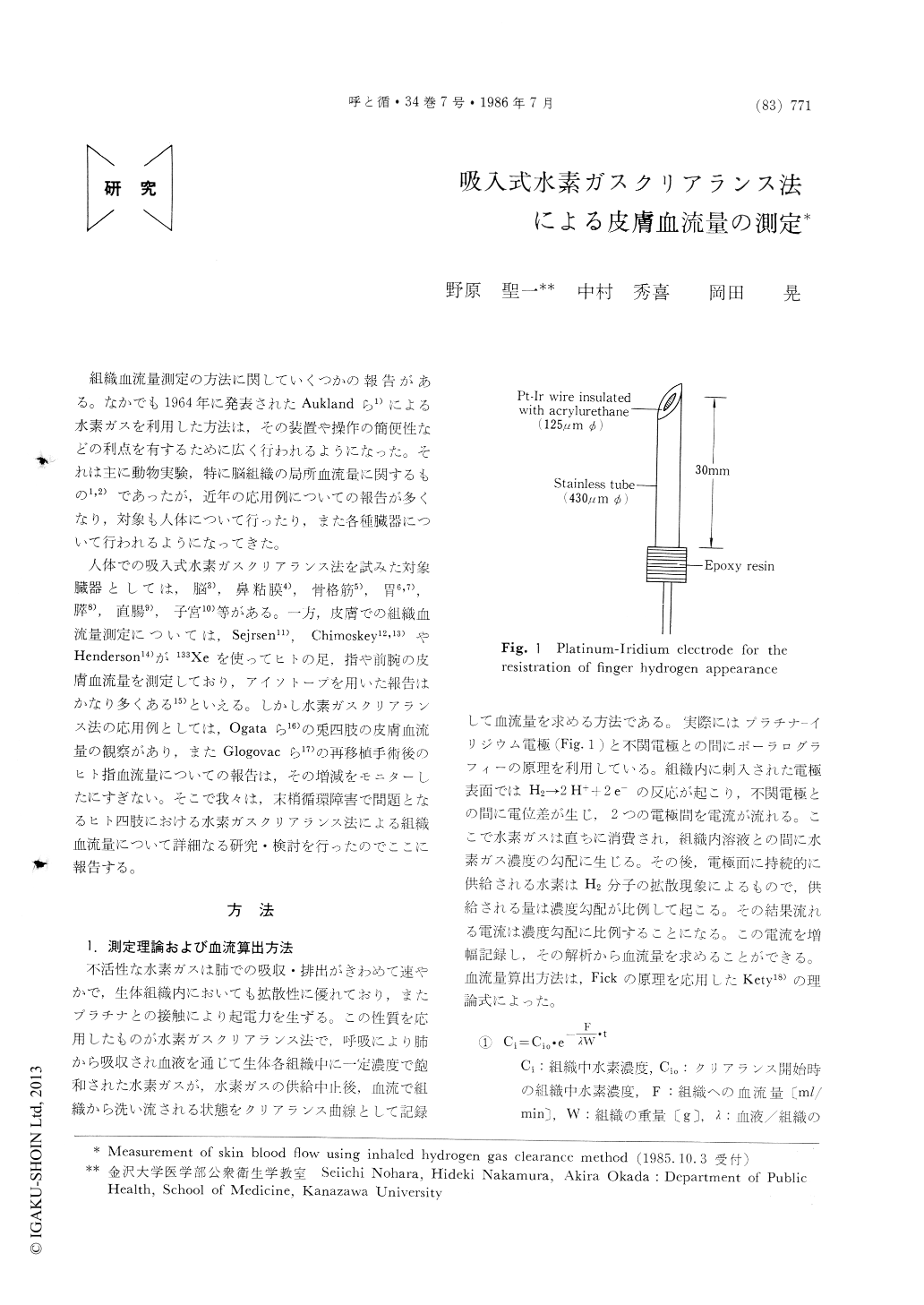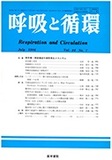Japanese
English
- 有料閲覧
- Abstract 文献概要
- 1ページ目 Look Inside
組織血流量測定の方法に関していくつかの報告がある。なかでも1964年に発表されたAuklandら1)による水素ガスを利用した方法は,その装置や操作の簡便性などの利点を有するために広く行われるようになった。それは主に動物実験,特に脳組織の局所血流量に関するもの1,2)であったが,近年の応用例についての報告が多くなり,対象も人体について行ったり,また各種臓器について行われるようになってきた。
人体での吸入式水素ガスクリアランス法を試みた対象臓器としては,脳3),鼻粘膜4),骨格筋5),胃6,7),膵8),直腸9),子宮10)等がある。一方,皮膚での組織血流量測定については,Sejrsen11),Chimoskey12,13)やHenderson14)が133Xeを使ってヒトの足,指や前腕の皮膚血流量を測定しており,アイソトープを用いた報告はかなり多くある15)といえる。しかし水素ガスクリアランス法の応用例としては,Ogataら16)の兎四肢の皮膚血流量の観察があり,またGlogovacら17)の再移植手術後のヒト指血流量についての報告は,その増減をモニターしたにすぎない。そこで我々は,末梢循環障害で問題となるヒト四肢における水素ガスクリアランス法による組織血流星について詳細なる研究・検討を行ったのでここに報告する。
Experiments were performed to determine whether the skin blood flow could be measured using inhaled hydrogen gas clearance method. The mean finger blood flow of the normal subjects obtained by this method was about 53.6±9.7ml/100g/min. The values obtained in the first measurement were correlated with those in the second measurement on the subjects (r=0.950. p<0.001). When the pneumatic tourniquet was inflated to 140mmHg and then deflated to 0 mmHg, the half period of the clearance curve has changed with the pressure of the pneumatic tourniquet. And then, about eighty-two per cent of the hydrogen clearance curves were monoexponential curve. In the biexponential curve, the value of blood flow obtained from total flow method was more akin to that in the monoexponential curve than that from initial slope method. Therefore, this method can be clinically applied to measure the blood flow of skin and finger for the diagnosis of the peripheral circulatory disorder.

Copyright © 1986, Igaku-Shoin Ltd. All rights reserved.


